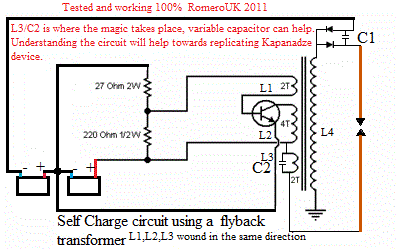Here is a pdf download for those interested in the brovin/kacher technology - sorry it's not in english but the schematics speak for themselves...
http://mazeto.net/index.php?PHPSESSI....0;attach=7744
Also the patent http://mazeto.net/index.php?PHPSESSI....0;attach=7742
http://mazeto.net/index.php?PHPSESSI....0;attach=7744
Also the patent http://mazeto.net/index.php?PHPSESSI....0;attach=7742
 Still for whatever reason he has started up his own forum (which is where I poached this information) I'm sure he wont mind to much,
Still for whatever reason he has started up his own forum (which is where I poached this information) I'm sure he wont mind to much, however if you want more information I suggest you surf over and read the actual builds and trials and tribulations
however if you want more information I suggest you surf over and read the actual builds and trials and tribulations



 ) only at maximum and they are too low for our application. So they are limited. And some of their range being unreliable. The main problem is measuriung capacitance at coils.
) only at maximum and they are too low for our application. So they are limited. And some of their range being unreliable. The main problem is measuriung capacitance at coils.
Comment